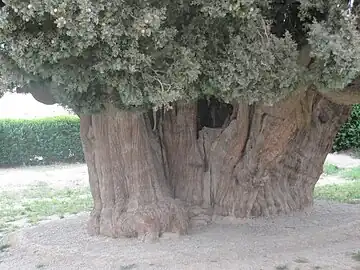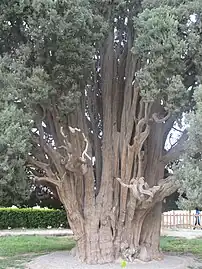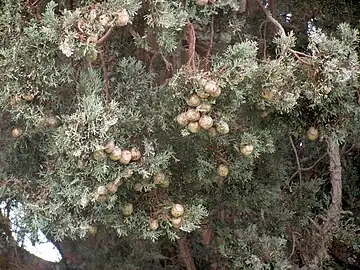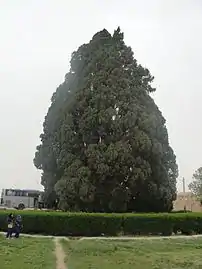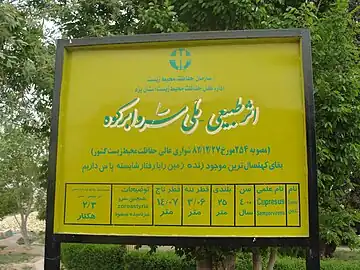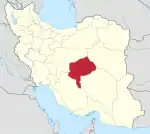Sarv-e Abarkuh
The Cypress of Abarkuh (Persian: سرو ابرکوه Sarv-e Abarkuh), also called the Zoroastrian Sarv,[1] is a Persian cypress (Cupressus sempervirens) tree in Abarkuh in Yazd Province of Iran. It is protected by the Cultural Heritage Organization of Iran as a national natural monument and is a major tourist attraction with a height of 25 metres (82 ft 0 in) and with a perimeter of 11.5 metres (37 ft 9 in) at its trunk and 18 metres (59 ft 1 in) higher up around its branches. It is estimated to be over four millennia old and is likely the oldest or second-oldest living lifeform in Asia.[2]
| Cypress of Abarkuh | |
|---|---|
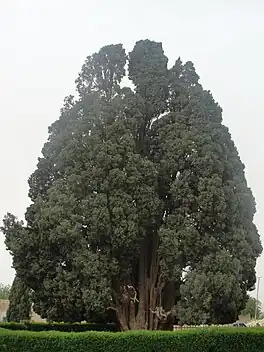 Sarv-e Abar Kuh | |
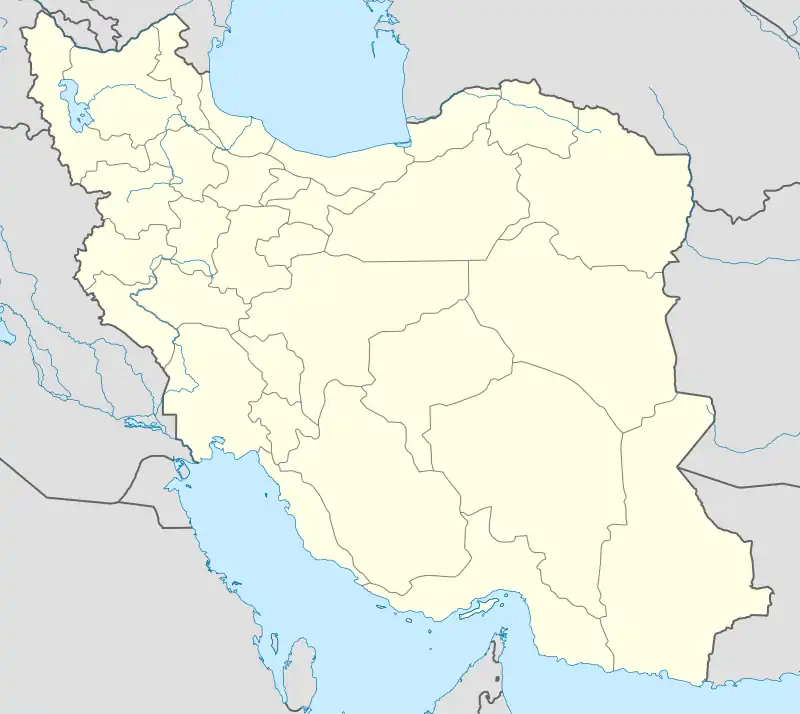 | |
| Native name | سرو ابرکوه (Persian) |
| Species | Mediterranean cypress (Cupressus sempervirens) |
| Location | Abarkuh, Yazd, Iran |
| Coordinates | 31.12264°N 53.27984°E |
| Height | 25 m (82 ft 0 in) |
The exact age of the tree has been difficult to determine, but it is estimated to be between 4000 and 5000 years old. Favorable natural conditions of its location have been credited as the main reason for the tree's longevity.
There is a legend about the tree, which says the tree was first planted by Zoroaster. It is said that Zoroaster left to spread his teachings to an Iranian city towards Balkh and met Shah Vishtaspa. He stopped at Abarkuh and supposedly planted this tree.[3]
Gallery
References
- "Cypress". Encyclopædia Iranica. Archived from the original on 2017-11-17.
- "Earth watchers Center". Archived from the original on January 17, 2013.
- "Cypress of Abarkooh Iran". untoldpersia.com. Retrieved 2018-01-21.
